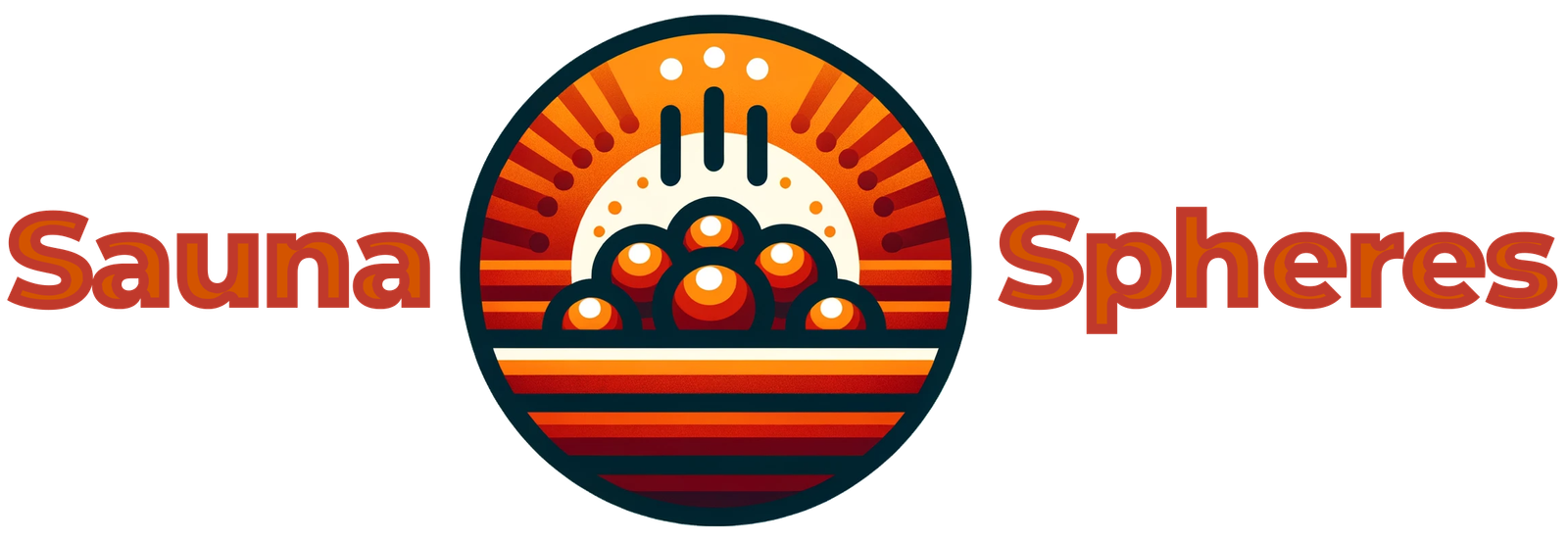Are you looking for a way to enhance your fitness routine? Well, look no further, because incorporating sauna use into your fitness regimen could be the solution you’ve been searching for. Saunas have been used for centuries for their health benefits, and they can provide a multitude of advantages when it comes to improving your overall well-being. So, if you’re curious about how to incorporate sauna use into your fitness routine, keep reading to discover the tips and tricks that will have you sweating it out in no time.
Benefits of sauna use in fitness regimen
Improved cardiovascular health
Using a sauna as part of your fitness regimen can greatly benefit your cardiovascular health. The high temperatures in the sauna cause your blood vessels to dilate, which increases blood flow to your heart and muscles. This increased blood flow can improve your cardiovascular endurance and overall heart health.
Detoxification
Sauna use also aids in detoxification. When you expose your body to the heat of the sauna, you begin to sweat profusely. Sweating helps eliminate toxins and impurities from your body through your skin, promoting a healthier and more balanced system. This detoxification process can help improve your overall well-being and enhance your fitness results.
Relaxation and stress relief
Another significant benefit of incorporating sauna use into your fitness routine is relaxation and stress relief. Saunas create a tranquil environment where you can unwind and let go of the stresses from your day. The heat from the sauna promotes the release of endorphins, which are the body’s natural feel-good chemicals. This helps reduce stress and anxiety, allowing you to recover both mentally and physically.
Improved endurance and performance
Regular sauna use can enhance your endurance and overall athletic performance. The increased blood flow and vasodilation experienced during sauna sessions can improve oxygen and nutrient delivery to your muscles, helping them work more efficiently. This improved blood flow can also aid in muscle recovery and reduce the risk of injuries, ultimately leading to better performance during your workouts.
Muscle recovery
Lastly, sauna use can significantly support muscle recovery. The heat from the sauna helps relax and soothe your muscles, reducing muscle tension and promoting faster recovery after intense exercise. The increased blood flow and improved oxygen delivery to your muscles during sauna sessions can also aid in the removal of metabolic waste products, reducing inflammation and soreness.
Determining the right sauna temperature and duration
Ideal sauna temperature
When using a sauna, it’s important to find a temperature that is comfortable for you. The ideal sauna temperature typically ranges between 150°F (65°C) and 190°F (90°C). However, it’s crucial to listen to your body and adjust the temperature according to your comfort level. Start at a lower temperature and gradually increase it as you become more accustomed to the heat.
Recommended duration of sauna sessions
The duration of your sauna sessions is another important aspect to consider. It is generally recommended to start with shorter sessions of around 10 to 15 minutes and gradually increase the duration up to a maximum of 30 minutes per session. However, if you are new to sauna use or have any health concerns, it’s always best to consult with a healthcare professional for personalized advice on duration.
Gradually increasing sauna exposure
If you are new to sauna use, it’s essential to gradually acclimate your body to the high temperatures. Start with shorter sessions and lower temperatures, and then slowly increase both the duration and temperature as your body becomes more accustomed to the heat. This gradual exposure will allow your body to adapt and maximize the benefits of sauna use while minimizing the risk of discomfort or overheating.

Precautions and considerations
Consulting with a healthcare professional
Before incorporating sauna use into your fitness regimen, it is crucial to consult with a healthcare professional, especially if you have any pre-existing health conditions or concerns. They can provide guidance on whether sauna use is suitable for you and any specific precautions you may need to take.
Avoiding dehydration
One of the most important precautions while using a sauna is to avoid dehydration. The high temperatures in the sauna cause excessive sweating, leading to fluid loss. It is vital to stay well-hydrated by drinking plenty of water before, during, and after your sauna sessions. This will help replenish the fluids lost through sweating and maintain proper hydration levels.
Limiting sauna frequency
While sauna use can provide numerous benefits, it’s essential to limit the frequency of sessions to avoid overexposure to high temperatures. Three to four sauna sessions per week, with at least one rest day in between, is generally recommended. This allows your body to recover and prevents excessive strain on your cardiovascular system.
Listening to your body
Lastly, always listen to your body while using a sauna. Pay attention to any signs of discomfort, lightheadedness, or nausea. If you experience any of these symptoms, it’s crucial to exit the sauna immediately and cool down. It’s important to prioritize your safety and well-being above all else.
Incorporating sauna use into a fitness routine
Pre-workout sauna session
A pre-workout sauna session can be a beneficial addition to your fitness routine. Spending 10-15 minutes in the sauna before your workout can help warm up your muscles and increase your body temperature. This pre-workout heat exposure can enhance your performance and flexibility, reducing the risk of injuries during exercise.
Post-workout sauna session
Following your workout, a post-workout sauna session can aid in muscle recovery and relaxation. The heat from the sauna helps relax your muscles and increase blood flow, allowing nutrients and oxygen to reach your muscles more efficiently. This can speed up the recovery process and reduce post-exercise muscle soreness.
Sauna as an active recovery tool
Sauna use can also be incorporated as an active recovery tool on your rest days. By spending time in the sauna, you promote increased blood flow and muscle relaxation, which aids in the repair and recovery process. This active recovery technique can help prevent muscle stiffness and improve overall workout performance.
Alternative sauna sessions
In addition to pre and post-workout sauna sessions, consider incorporating alternative sauna sessions throughout the week. These sessions can provide extra relaxation, stress relief, and detoxification benefits. Whether it’s taking a sauna session before bedtime to promote better sleep or scheduling sauna sessions on non-training days for additional recovery purposes, find a routine that works best for you.

Hydration before and after sauna
Importance of hydrating before sauna
Hydration is crucial before entering a sauna. Since sauna sessions cause excessive sweating, starting your session well-hydrated can help maintain fluid balance and prevent dehydration. Drink plenty of water before entering the sauna to ensure your body is adequately prepared to handle the heat and minimize the risk of dehydration.
Best fluids pre-sauna
While water is the go-to choice for pre-sauna hydration, you can also consider beverages that replenish electrolytes for added hydration benefits. Coconut water, sports drinks, or electrolyte-infused water can help replenish not only fluid but also important minerals lost through sweating.
Hydrating after sauna
After a sauna session, it’s essential to continue hydrating to replace the fluids lost through sweating. Drink water and electrolyte-rich beverages to restore your body’s hydration levels. Taking small sips regularly will be more effective in rehydration than trying to consume a large volume all at once.
Replenishing electrolytes
Sweating in a sauna can cause you to lose important electrolytes needed for optimal body function. Replenishing these electrolytes is critical for maintaining hydration, muscle function, and overall health. Consuming foods rich in electrolytes or using electrolyte supplements can help in restoring these essential minerals.
Sauna and weight loss
Temporary weight loss
Using a sauna for weight loss should be understood as a temporary effect. Although you may experience a drop in weight immediately after a sauna session due to water loss through sweat, this weight loss is primarily water and will quickly be regained upon rehydration. It’s important to approach sauna use as a complementary tool to support overall weight loss efforts.
Burning calories and boosting metabolism
While sauna sessions alone do not directly burn a significant number of calories, they can contribute to an increased metabolic rate. The high temperatures in the sauna cause your heart rate to rise, leading to increased calorie expenditure. This increased metabolic rate can have a marginal impact on overall calorie burn and support weight management efforts in conjunction with a well-rounded fitness routine and healthy diet.
Maintaining a balanced and healthy approach
It’s crucial to maintain a balanced and healthy approach when incorporating sauna use into your fitness regimen. Sauna sessions should complement a well-rounded fitness routine, proper nutrition, and an active lifestyle. Remember that sustainable weight loss and overall well-being are achieved through a holistic approach and not solely reliant on sauna use.
Combining sauna with other recovery methods
Cold water immersion
Cold water immersion, also known as contrast therapy, can be combined with sauna use to promote enhanced recovery. After a sauna session, immersing yourself in cold water or taking a cold shower helps reduce inflammation, decrease muscle soreness, and improve circulation. The contrast between hot and cold temperatures stimulates the body’s natural recovery mechanisms, aiding in muscle repair and improving overall recovery efficiency.
Massage therapy
Pairing sauna use with massage therapy can provide a comprehensive approach to recovery and relaxation. After a sauna session, your muscles are warm and relaxed, making it an ideal time for a massage. Massage therapy can help reduce muscle tension, improve flexibility, and enhance overall recovery. Consider scheduling a massage session following your sauna sessions to maximize the benefits.
Foam rolling
Foam rolling, also known as self-myofascial release, is another effective technique to combine with sauna use. After a sauna session, your muscles are warmed up and more pliable, making foam rolling even more effective. Foam rolling helps release muscle knots and tension, improves blood flow, and enhances mobility. Incorporating foam rolling into your routine after a sauna session can provide additional benefits for muscle recovery and injury prevention.
Stretching and mobility exercises
Stretching and mobility exercises can also be integrated into your sauna and recovery routine. After a sauna session, your muscles are warmed up, allowing for deeper stretches and improved range of motion. Incorporate dynamic and static stretching as well as mobility exercises to target specific muscle groups and promote overall flexibility. This combination can help with muscle recovery, injury prevention, and overall fitness performance.
Safety tips for using saunas
Using a sauna in a well-ventilated area
It is essential to use a sauna in a well-ventilated area to ensure proper air circulation and oxygen supply. Well-ventilated saunas help prevent the buildup of excessive heat and humidity, reducing the risk of discomfort or overheating. Make sure the sauna you are using has proper ventilation and follow any ventilation guidelines provided.
Gradually acclimating to high temperatures
When starting out with sauna use, it’s crucial to gradually acclimate your body to the high temperatures. Begin with shorter sessions at lower temperatures and slowly increase the duration and temperature as your body adapts. This gradual acclimation will reduce the risk of overheating and allow you to reap the benefits of sauna use safely.
Avoiding alcohol and medications
Avoid consuming alcohol or taking medications that may affect your body’s ability to regulate temperature and increase the risk of dehydration while using a sauna. Alcohol and certain medications can impair your judgment and alter your body’s response to heat, potentially leading to dizziness, increased heart rate, or other adverse effects. It’s best to stay hydrated with water and avoid alcohol or medications that may interfere with your sauna experience.
Taking breaks when needed
If you feel any discomfort, lightheadedness, dizziness, or other concerning symptoms while using a sauna, it’s crucial to take a break or exit the sauna. Listen to your body and prioritize your safety. Stepping out of the sauna, cooling down, and rehydrating can help alleviate any symptoms and prevent further discomfort. Your well-being is always the top priority in any fitness regimen.
Sauna etiquette
Showering before using the sauna
To maintain cleanliness and respect for others using the sauna, it’s important to shower before entering. Showering helps remove any lotions, oils, or sweat from your body, preventing them from contaminating the sauna’s surfaces. Additionally, showering before using the sauna helps open up your pores and enhances the effects of the heat on your body.
Using a towel or mat
Using a towel or mat is essential to maintain proper hygiene and protect the sauna’s benches or seats from sweat. Place a clean towel or mat on the surface you will be sitting or lying on to prevent direct contact between your body and the sauna. This helps absorb sweat and prevents the spread of bacteria, ensuring a clean and sanitary environment for everyone to enjoy.
Respecting others’ privacy
When using a sauna in a communal setting, it is important to respect the privacy and personal space of others. Keep conversations low and avoid disruptive behavior. If someone prefers silence or relaxation, try to maintain a peaceful environment to ensure everyone can fully enjoy the benefits of the sauna experience.
Maintaining cleanliness
To ensure a pleasant experience for everyone, it’s important to clean up after yourself in the sauna. Wipe down any surfaces you have used with a clean towel or disinfectant wipes to remove any sweat or bacteria. By maintaining cleanliness, you contribute to a hygienic environment for yourself and others.
Adapting sauna use to individual needs and goals
Considering health conditions and limitations
When incorporating sauna use into your fitness regimen, it’s important to consider any health conditions or limitations you may have. Certain health conditions, such as cardiovascular or respiratory issues, may require special precautions or limitations when using a sauna. Always consult with a healthcare professional to ensure sauna use is safe for you and tailored to your specific needs.
Personalizing sauna temperature and duration
Every individual has a unique comfort level when it comes to sauna temperature and duration. Experiment with different temperatures and durations to find what works best for you. Personalizing your sauna experience can enhance your enjoyment and maximize the benefits you derive from each session.
Incorporating sauna as a relaxation tool
Beyond the physical benefits, sauna use can also serve as a valuable relaxation tool. Take advantage of the tranquil environment of a sauna to unwind, destress, and recharge. Consider incorporating mindfulness techniques, such as deep breathing or meditation, during your sauna sessions to further enhance the relaxation benefits. Embrace the holistic experience the sauna provides and indulge in moments of self-care and mental rejuvenation.
In conclusion, incorporating sauna use into your fitness regimen can have numerous benefits for your cardiovascular health, detoxification, relaxation, endurance, performance, and muscle recovery. When using a sauna, it’s important to determine the right temperature and duration for your comfort level, gradually increase sauna exposure, and take necessary precautions such as consulting with a healthcare professional, staying hydrated, and listening to your body. Sauna sessions can be incorporated pre and post-workout, as well as for active recovery purposes. Hydration before and after sauna is crucial, and combining sauna use with other recovery methods such as cold water immersion, massage therapy, foam rolling, and stretching can further enhance your overall fitness journey. It is essential to practice proper safety, etiquette, and cleanliness in saunas, and adapt sauna use to your individual needs and goals. By following these guidelines, you can optimize the benefits of sauna use and enjoy a revitalizing experience as part of your fitness routine.

